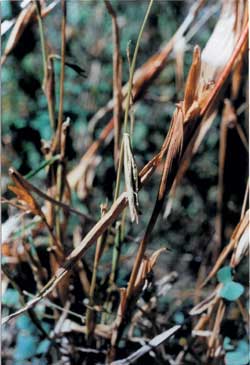|
In addition to the variability of the landraces present in Huehuetenango, it is necessary to provide some information on the closest wild relative of maize present in the area, namely, teosinte. At this time, two species of teosinte are present in Guatemala: Zea luxurians, which is distributed in eastern Guatemala (Departments of Jutiapa, Jalapa and Chiquimula), and Zea mays subsp. huehuetenangensis, which is endemic in the Department of Huehuetenango, that gave the sub-species its name. This taxon is not widely distributed in the whole Department since it is found in the areas of the municipalities of Santa Ana Huista, San Antonio Huista, Jacaltenango and Nentón (Iltis et al., 1986). Its capacity to hybridise with cultivated maize was amply demonstrated by Wilkes (1977). It is therefore not surprising that Huehuetenango, precisely the region where teosinte is found, has been considered the possible centre of origin of maize in Central America. In some ways, the important role teosintle has played in the evolution of maize is recognised, however no effort to date has been made to know and preserve the genetic diversity of the Huehuetenango teosintle; this problem is worsened by the fact that the taxon grows wild on the fringes of cultivated areas and roadsides, and as was shown by Azurdia, et al. (1986), this resource is highly affected by the process of genetic erosion. |
Photo 8
Teosinte (Zea mays subspecies huehuetenangensis) from the area of Jacaltenango, Huehuetenango, Guatemala

(Photo: César Azurdia)